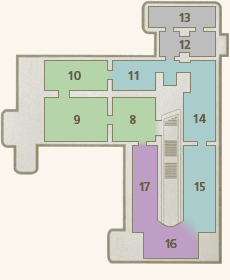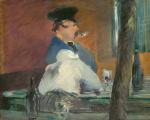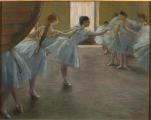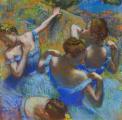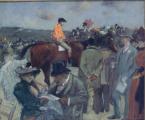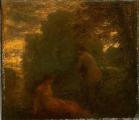In the mid-nineteenth century many young French artists, dissatisfied with the predominance of the academic tradition based on strict classical canons, began to look for ways of renewing art. They turned to themes and subjects ill en from real life: the heroes of their works were now simple Parisians, the-M re lovers and frequenters of cafes. Artists now strove to record fresh impressions and directly perceived reality in their works.
The oeuvre of Edouard Manet is generally regarded as the harbinger of Impressionism, although the artist did not see himself as an adherent to this trend and refused to take part in the Impressionists' group exhibitions. Yet Manet's discoveries, the deliberate fragmentation of the representation, the energetic moulding of form, and the fresh, expressive colours, had a great Influence on the next generation of artists. It was around Manet that young painters including the future Impressionists Monet, Sisley, Pissarro and Renoir grouped.
A special position in the art of this period belongs to the painting of Edgar Degas. A participant in almost all the Impressionist exhibitions and one of the organisers of the Anonymous Society of Painters, Sculptors and Engravers, nevertheless found many principles of the new art alien to him. Having received an academic education, the artist denied the possibility of conveying I direct impression in a picture: “Everything I do is the result of deliberation…” A brilliant master of composition, Degas advanced a fundamentally new method of constructing a picture without the traditional centre, a method based on the "random glance". For the artist the meaning of his work lay in depicting life "caught unawares, without any posing".
Like his teacher Edgar Degas, Jean-Louis Forain turned to contemporary subjects, sketching street scenes, theatre people, frequenters of cafes, couples out for a walk. His works, regularly displayed at Impressionist exhibitions, possess remarkably keen vision, as well as precise characters and types.
Most of the works in this room were executed in the pastel medium, which became particularly widespread in the middle of the nineteenth century.


